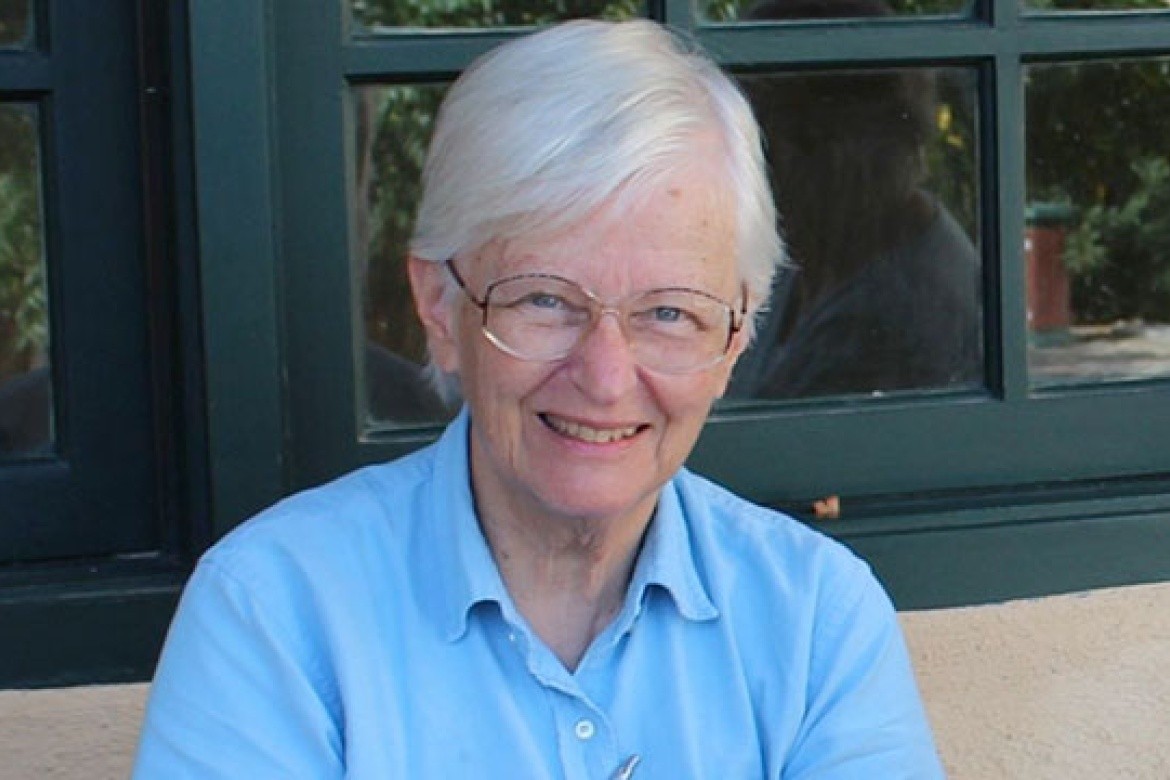Following Comet Arend-Roland to a Career in Astronomy

"Every night I sketched comet Arend-Roland and took pictures in the observatory dome and was hooked!"
Major: astronomy, with minors in math and physics
Advanced degrees: M.A., Ph.D., Indiana Univ.
I arrived at Mount Holyoke in the fall of 1956 (back in the Dark Ages!), intending to be a French major. I had been interested in astronomy since I was about twelve, knew my way around the sky, and had a small telescope. But I had really enjoyed French and Latin in high school, and expected to go that route. So in my first semester I took an upper level French course, but also basic astronomy to fulfill the science requirement.
During that semester I discovered two things. First, while I enjoyed learning the French language and being able to speak and read, I wasn’t cut out to do literary analysis, which is what the major would involve. Second, I really, really liked astronomy, so by the end of the term I had decided to become an astronomy major.
My decision was reinforced in the spring semester, with the arrival in April 1957 of Comet Arend-Roland. This was the first comet I’d ever seen, and a very spectacular one at that. I went over to the observatory every night, sketched the comet and mapped its position, and even participated in taking some photos of it with the Ross camera mounted on the telescope in the dome. And I was hooked!
This meant that in my sophomore year I had to start taking both math and physics, so I got a bit of a late start on those. But I graduated with a major in astronomy and minors in math and physics; I went on to do a Ph.D. at Indiana University, where I was the only female among about 25 astronomy graduate students. It never occurred to me that this was not a woman’s field, since I had seen and read about plenty of examples of women astronomers. I did get annoyed, though, when one of my professors referred to some of the more tedious computations in terms of how many “girl-hours” they would require! But Mount Holyoke had shown me that women could be whatever they wanted to be, and I am grateful for that.
After two years teaching astronomy at the University of Southern California, I ended up for 31 years at Whitman College in Walla Walla, WA. This is a small liberal arts college, where I was a one-person astronomy department, teaching both introductory and advanced courses, and developing a combined astronomy-physics major. Since we didn’t have research telescopes (and this was pre-Internet), but we had a good library, I got interested in the history of astronomy, and for 30 years wrote a bi-monthly column for the Astronomical Society of the Pacific’s magazine Mercury. For me it was a very satisfying career, and I am happy to say that my successor at Whitman is a woman who was one of my astronomy majors.
While I was at Whitman, I also ran an early music ensemble, the Whitman Renaissance Consort, for about 20 years. We gave a couple of full concerts each year, and some of these were astronomically based. For example, in 1973 we celebrated the 500th anniversary of the birth of Copernicus, with a program of Polish Renaissance music (and a little Italian, since he spent ten years there). And we did a Halley’s Comet concert in 1986, with pieces from every return of the comet since 1066 (except for 1835); we ended with Halley’s Comet Rag, written in 1910. Working with this group of students and townspeople was one of my most rewarding experiences at Whitman, and many of its members are still my close friends.
I am still glad to be able to speak French, but I’ve never regretted changing my initial plan.